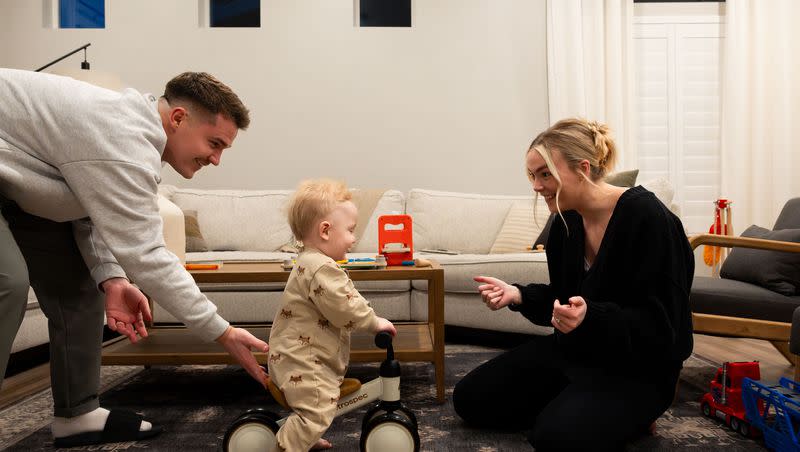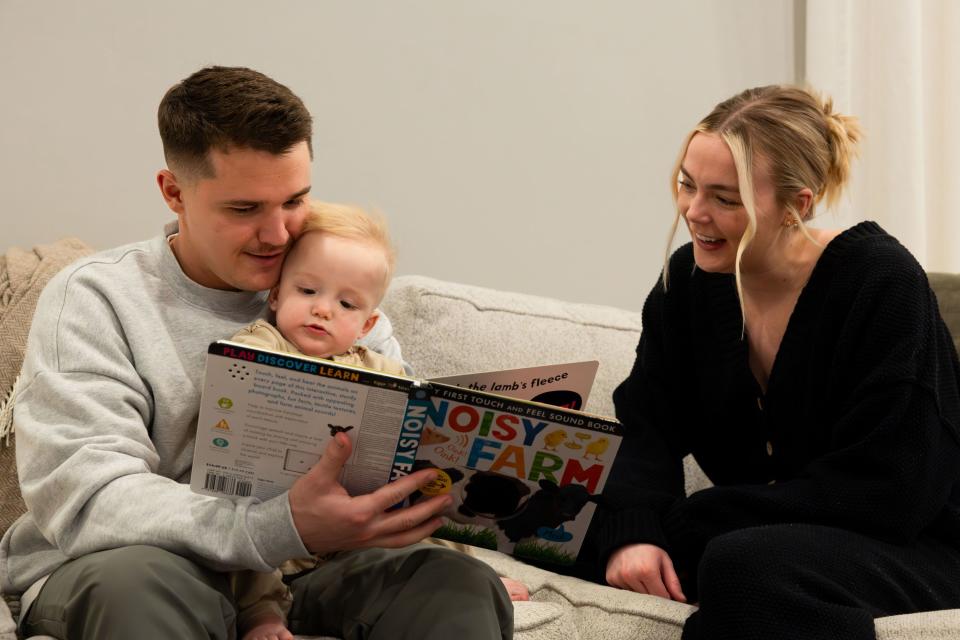From Gen Z to the baby boomers, 2023 was bad when it came to housing

In December 2022, Gen Zers McCall and Cole Porter jumped at the chance to buy a home in a market that was difficult for many people their age. The Porters found their $415,000 two-story townhome in the relatively new development area of Saratoga Springs, Utah.
Cole Porter said they chose the Saratoga Springs home because it was the best deal and was seller-financed.
When a house is seller-financed, it means that the seller of the property is also acting as the lender for the buyer. So, instead of the buyer obtaining a mortgage through a traditional bank or financial institution, the seller provides the financing for the purchase.
Thanks to creative financing, the Porters were able to get into the house just ahead of what was a historically bad year for homebuyers.
Buying a home in 2023 was a financially unrealistic pursuit for many people across different age groups who were trying to buy a home, especially given the high home prices, low inventory and high interest rates.
The median household income in the United States is between $50,000 and $90,000. The average home sale price in 2023 was $408,806. If a person’s annual income is around $78,000, they would have to spend more than 41% of their income to pay for their housing costs each month.
“For a U.S. homebuyer to spend no more than 30% of their income on monthly payments, they would’ve had to have made at least $109,868 in 2023,” per Mansion Global. “That’s also a record high, up 8.5% from 2022.”
Which generation is taking the hardest hit?
According to a report by Redfin, there were four generations who made up the 2023 homebuying market:
Baby boomers (ages 59-77).
Generation X (43-58).
Millennials (27-42).
Generation Z (11-26).
Gen Zers under the age of 19 were not included in the survey.
“Just over one-quarter (26.3%) of adult Gen Zers owned a home in 2023, little changed from 26.2% in 2022. Meanwhile, the homeownership rate for millennials rose to 54.8% from 52%, and the homeownership rate for Gen X rose to 72% from 70.5%. The rate for baby boomers was little changed (78.8% vs 78.7% in 2022), down from a record 79.7% in 2020, as some boomers have passed away or moved into retirement homes,” the survey found.

Each generation faces different challenges
As Gen Zers begin to reach the age of homeownership, they're likely fresh into their careers and haven’t built up enough savings or earned money from selling a home to afford their first choice; this gives older generations an advantage.
“Even in Utah, however, Gen Z faces tough competition in local housing markets where entry-level housing is particularly hard to come by,” according to the Utah Association of Realtors. “First-time buyers should expect intense competition since there aren’t enough houses to go around.”
The Porters relied on word of mouth to get into their home.
“We heard from a friend of a friend who knows a lady that was selling this house,” Porter said. “She moved into it brand new, but her job at the last second had to move her to Logan, so she needed to sell it quickly.
Porter said the seller would have lost money selling it the traditional route, “So, instead, we just took over her payments by doing what is called “Sub 2,” which is short for subject to investing.” This means that the Porters took ownership of the property, but the existing mortgage stayed in the name of the original homeowner. This also means that the loan is not paid off or refinanced. So, the Porters became responsible for making the mortgage payments of $ 2,200 a month even though the mortgage remained in the seller’s name.
“We didn’t have to go through a real estate agent, no closing costs and no inspections because it was new,” Porter said. “We moved into the house two weeks after we found it, and it’s on a five-year balloon, so that means in year five, we’ll have to refinance it.”
Porter said he advises his friends who are currently in the market to buy a home to look for creative financing deals, “Whether that’s Sub 2, rent-to-own or any sort of creative financing deal, that’s what I tell them to look for because they are getting more and more popular due to the state of the market.”
“They’re harder to find, but once you find it, it’s so much better, and no matter how the housing market is, I think it’s smart to own real estate,” he added.

Housing shortages are a different generation's problem.
Just because millennials may have more funds to buy a home for their growing family doesn't mean there are options out there for them to choose from. U.S. Census data from 2022 analyzed by Redfin found that baby boomers own the most large homes in the nation.
“Empty-nest baby boomers own nearly 3 in 10 (28.2%) large U.S. homes. That’s twice as many as millennials with kids, who own just 14.2% of the country’s large homes. Gen Zers with kids own almost none (0.3%) of them,” per Redfin.
In Salt Lake City, 22% of large homes are owned by empty-nester baby boomers compared to 16.3% of millennials with children.
The article said that “an additional 7.5% of the country’s large homes are owned by baby boomers with households of three adults or more,” most likely parents with an adult child living under their roof.
This is because baby boomers don't have much of a financial incentive to downsize from their larger homes. Due to staggering interest rates along with high home prices, many baby boomers are staying put.
“People who already have a home and a low 2% or 3% mortgage rate are less likely to put their house up for sale, because to buy another one they’d get stuck with a much higher rate,” according to GPB News.
Related
What’s in store for 2024
Although 2023 was not an ideal year for potential homebuyers, there is hope for 2024.
According to the Federal Home Loan Mortgage Corp., commonly referred to as Freddie Mac, the new year has already seen a dip in mortgage rates:
“Mortgage rates decreased this week, reaching their lowest level since May of 2023. This is an encouraging development for the housing market and in particular first-time homebuyers who are sensitive to changes in housing affordability.”
Keith Gumbinger, vice president of mortgage website HSH, told Forbes that it is better for the housing market if interest rates are gradual rather than all at once. “(It is) Better that rate reductions happen at a metered pace, incrementally improving buyer opportunities over a stretch of time, rather than all at once,” Gumbinger said.
“Mortgage rates returning to a more ‘normal’ upper 4% to lower 5% range would also help the housing market, over time, return to 2014-2019 levels,” per Forbes. “Yet, Gumbinger predicts it could be a while before we return to those rates.”

